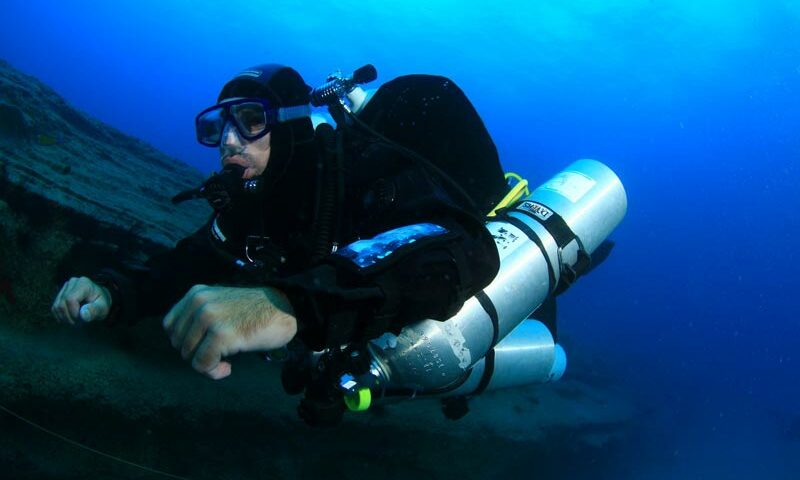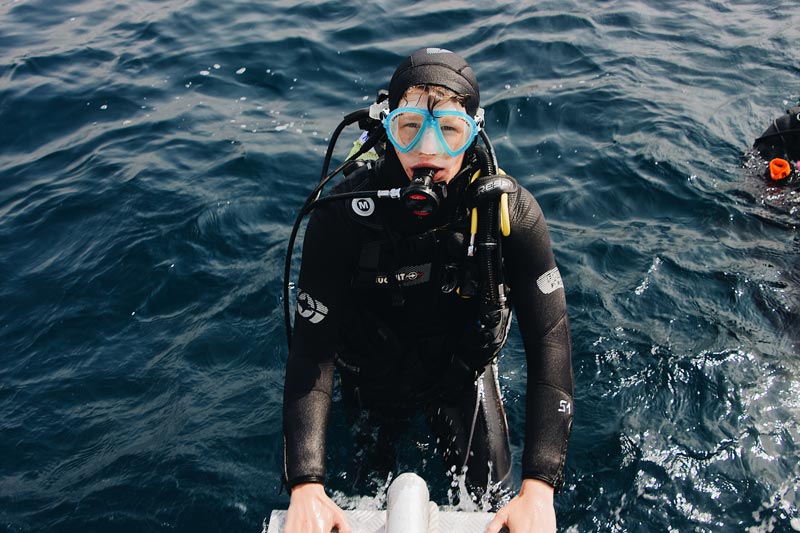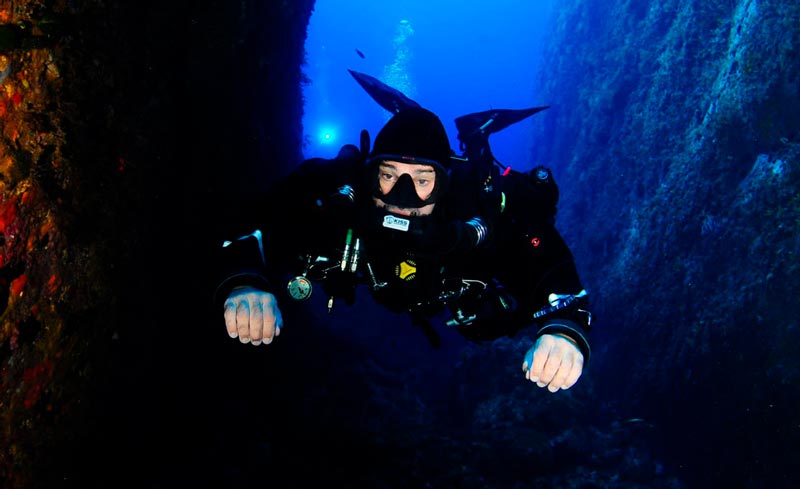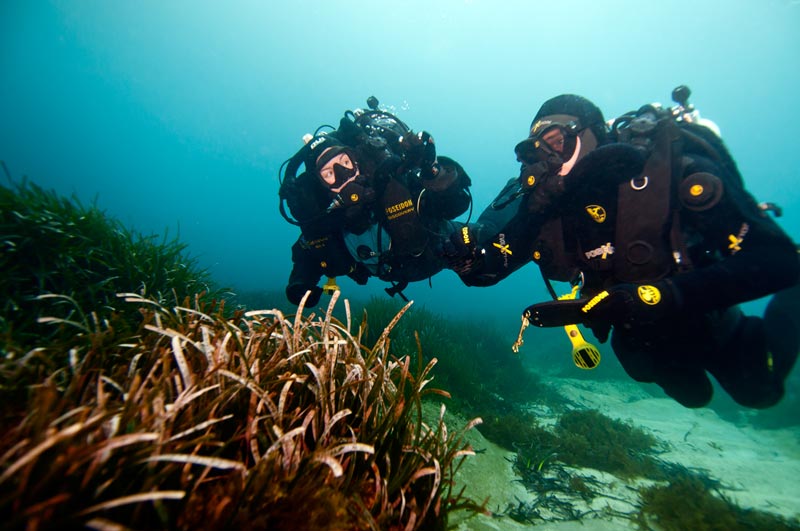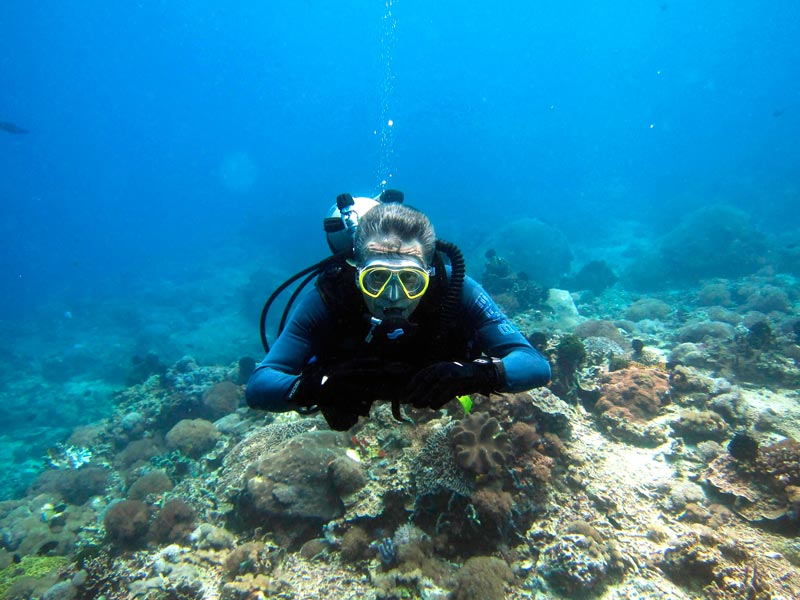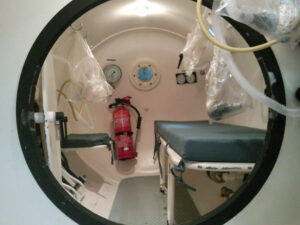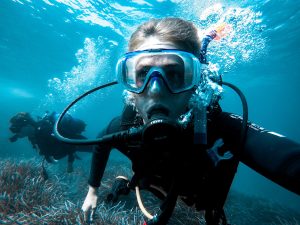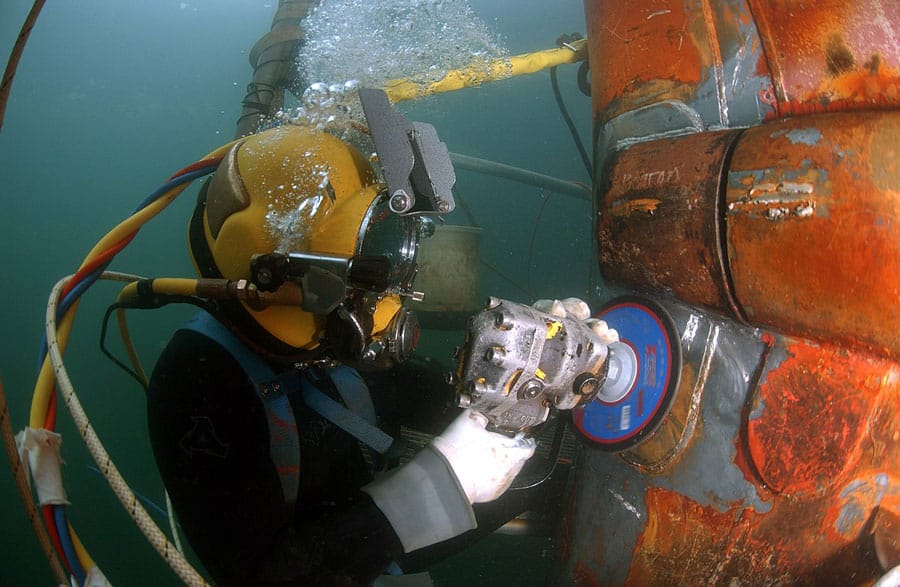3. First stop depth debate
To get the decompression process optimization that the new models supposed, NEDU (US Navy) wanted to verify them.
So, Dr.David J. DOOLETTE and his team conducted an experiment. The goal was to show that deep stops were better and more effective. In this way they could reduce the decompression times of their tables and optimize their performance. It was assured by Dr. Doolette in a personal conversation with me. But they did not expect the surprise they were going to get.
There were two dive profiles in the experiment. Both carried out with air, at a depth of 50 meters/ 164 feet, for 50 minutes of bottom time and with a total duration of 174 minutes.
One of the profiles followed dissolution decompression patterns. The other made deeper stops according to a US Navy VVal algorithm.
The experiment subjects’ performance was in a temperature-controlled hyperbaric chamber. The subjects had to do constant exercise on an ergonomic bicycle with the same intensity. Measurements were made by reducing the variables involved in decompression sickness.
The surprise was maximum when after making 200 exposures of each profile, 11 decompression sicknesses occurred in the deep stop’s scuba profile and only 3 with the traditional profile, two of those having only weak symptoms, according to Dr. Doolette.
In the conversation, Dr. Doolette was asked if he thought the same thing would happen to him using Trimix. He confessed that he was collaborating in a Swedish navy investigation whose results pointed in the same direction.
This study has had a lot of controversy due to the scientific protocol. However, other studies, such as the one by Jean-Eric Blatteau in France, also offered deep stop scuba disappointing results.
What is the explanation for these results? It is easy. During the time you are in the deep stop, the fast elimination and saturation tissues really discharge, but the slow and medium tissues continue to load with nitrogen. So, when you get to the surface, you have the middle tissues crammed with nitrogen.
- OK, I understood. So, we dismiss deep stop scuba completely, don’t we, Victor?
- No, at least not entirely.
Dr. Christian R Gutvik of the University of Norway conducted another study with anesthetized pigs, because they are physiologically more similar to humans.
Gutvik made 2 profiles with two variants each. In the first one, he submerged the pigs to 30 meters/98 feet with a 70-minute permanence at the bottom and evaluated them with deep stop scuba and traditional stops. In the second, he took them up to 60 meters/ 197 feet, but he only had them in the bottom for 20 minutes and subjected them to both types of stops.
The result of the ultrasound was interesting. It indicated that pigs that had deep stalls while shallow and a lot of bottom time had fewer bubbles than traditional stalls.
In contrast, the pigs that made deep stops, descended to 60 meters/ 197 feet and spent 20 minutes at the bottom had more bubbles than those that made traditional stops.
It indicates that it is vital to assess the severity of the dive and diving time. Doing a shallow dive with a lot of bottom time can be riskier than diving deeper for a short time. So, in this type of diving, deep stops do make sense.




